Are you looking for a way to beautify your garden and boost your home’s overall curb appeal in Kentucky? Planting a flowering tree may be the best way to go about it! Beautiful foliage and colorful blooms will bring unmated aesthetic value to your landscape. Read on to find out about 19 magnificent flowering trees to plant in Kentucky.
Blessed with a versatile landscape, Kentucky is home to a wide range of some of the most gorgeous trees in the US that bring a touch of color and natural beauty, particularly during the spring and summer seasons. Boasting from arresting forests to high ridges, mountains, coal fields, valleys, and more – the Bluegrass State has six striking geographical regions, including the western Coalfields, Jackson Purchase, western Pennyroyal Plateau, the Bluegrass region, and Jackson Purchase in the far west.
Furthermore, Thanks to the central location, Kentucky receives plenty of sunshine and enjoys all four seasons. Enjoying an overall subtropical climate, the summers in the state are typically warm and humid, while the winters are moderately cold with a light draft.
Combined with favorable climatic conditions, the diverse landscape of Kentucky provides homeowners and tree-lovers with plenty of options when it comes to planting flowering trees in Kentucky. Some of the most popular flowering trees in Kentucky include 5. Kentucky Coffeetree, Dogwood, Pine, American Beech, Kentucky Yellowwood, Autumn Cherry Trees. You can also consider low-maintenance options, such as the prolific Service Berry tree, the beautiful Eastern Redbud, or the lovely Tulip Poplar trees.
Regardless of the flowering tree you choose to include in your lawn or garden, you can rest assured that they will take the natural beauty and aesthetic appeal of your place to the next level. Plus, trees are an essential part of the ecosystem – providing habitat for birds and improving the environment.
Here are some of the best flowering trees that you can consider to find the perfect tree for your garden in Kentucky.
1. Eastern Redbud
- Cercis canadensis
- Flowering in: Spring
- Max Height: 30 ft.
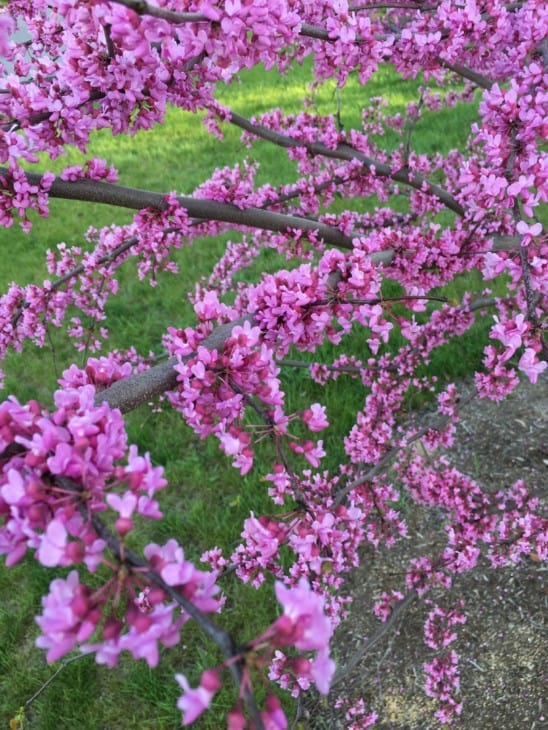
If you are a beginner looking for a low-maintenance flowering tree, Eastern Redbud may be an ideal choice for you. The tree grows beautiful, bright pink flowers along the twigs, branches, and even the trunk for a few weeks during the spring. In the summer, the heart-shaped leaves turn a bright shade of cool green before turning yellow in the autumn. Regardless of the season, Eastern Redbud looks simply stunning!
2. Serviceberry
- Amelanchier Arborea
- Flowering in: Spring
- Max Height: 10-25 ft.
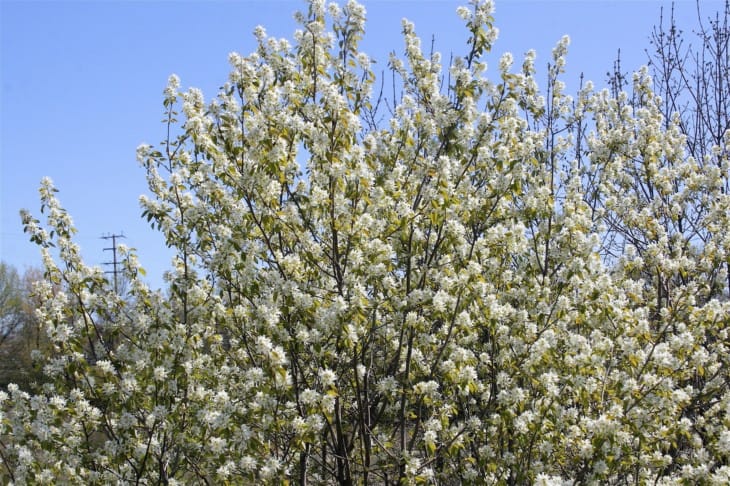
One of the most popular Kentucky flowering trees, Serviceberry produces fragrant white flowers in the spring and lovely orange-red berries in the autumn. If you want to invite some fun wildlife into your garden, you’ll be glad to know that birds love to eat the berries and will surely frequent your garden. Furthermore, the Serviceberry tree can tolerate clay soil and requires minimal maintenance.
3. Fringe Tree
- Chionanthus virginicus
- Flowering in: Late Spring and Early Summer
- Max Height: 20 ft.
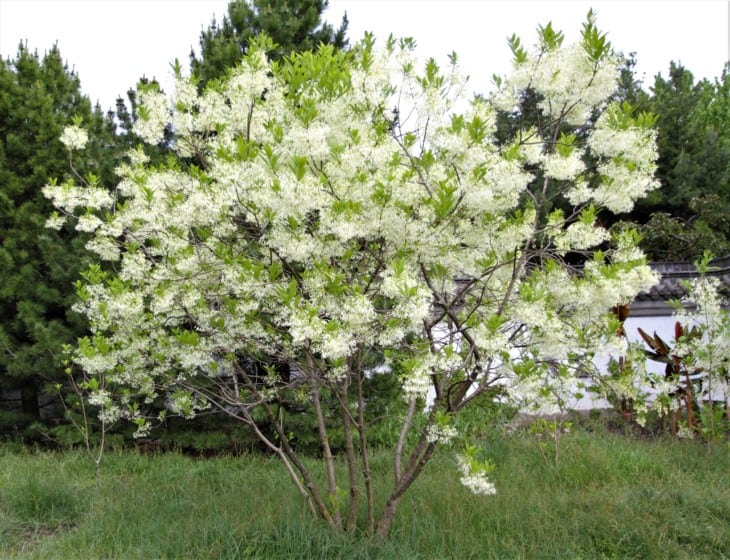
Another great option for homeowners and gardeners looking to attract wildlife! The Fringe tree grows fruits that attract birds, while the fragrant strap-like white flowers will bring in colorful butterflies. It is a shrub tree that is ideally planted along mixed borders, patios, and sidewalks. It prefers moist acidic soil and tolerates clay soil and road soil. It also enjoys sun, requiring around 6 hours of direct sunlight daily.
4. Staghorn Sumac
- Rhus typhina
- Flowering in: Summer
- Max Height: 25 ft.
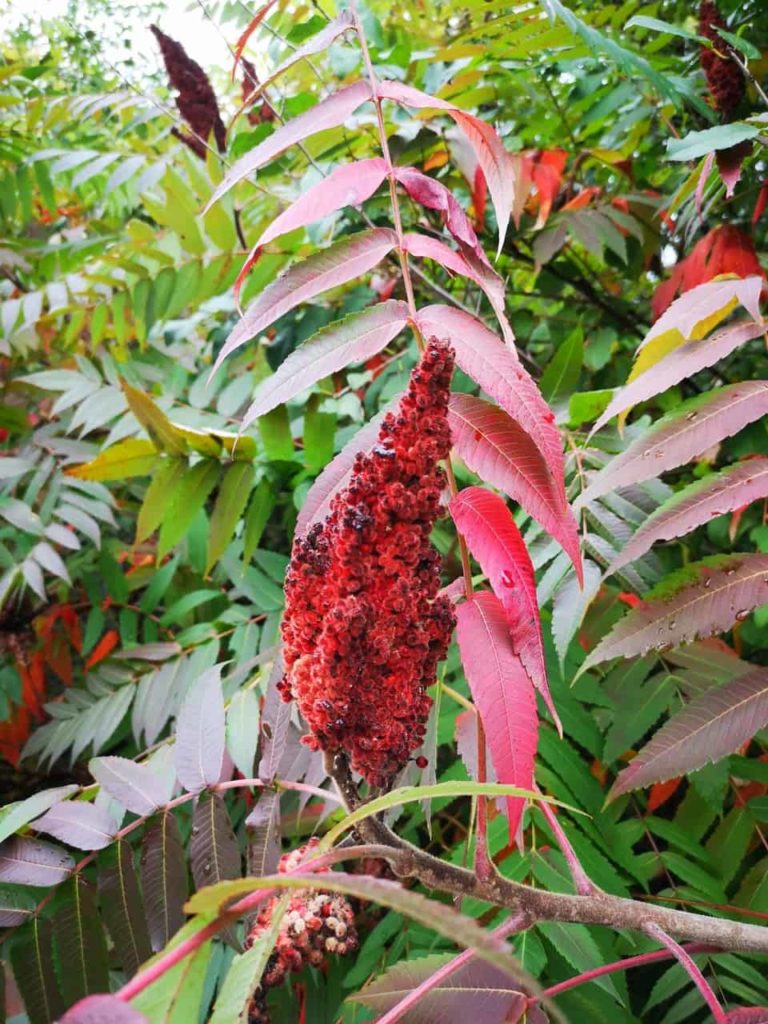
Boasting crooked trunks, picturesque branches, and velvety twigs, Staghorn Sumac will add a distinctive look to your garden. It has large, red leaves that add a tropical touch to any landscape. While the flowers aren’t very showy, Staghorn Sumac produces bright red fruits that look like torches and attract birds and caterpillars. However, keep in mind that this tree is not ideal for small spaces because it thrives in colonies.
5. Kentucky Coffeetree
- Gymnocladus dioicus
- Flowering in: Late Spring to Early Summer
- Max Height: 60-75 ft.
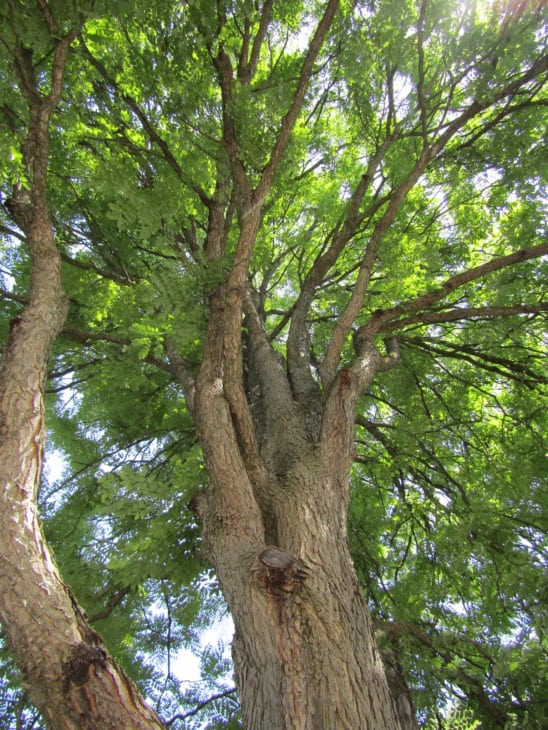
Kentucky coffeetree has distinctive, tropical-looking foliage and produces fragrant flowers. While the flowers aren’t very showy, the great thing about Kentucky Coffeetree is that it produces seeds that can be roasted to create a substitute for coffee. The bold, bare branches of the tree look just as mesmerizing in the winters as the full foliage in the summer. The tree attracts birds, butterflies, and eastern tiger swallowtail. It is also easy to grow and tolerates droughts as well as moist soils.
6. Dogwood
- Cornus florida
- Flowering in: Spring
- Max Height: 25 ft.
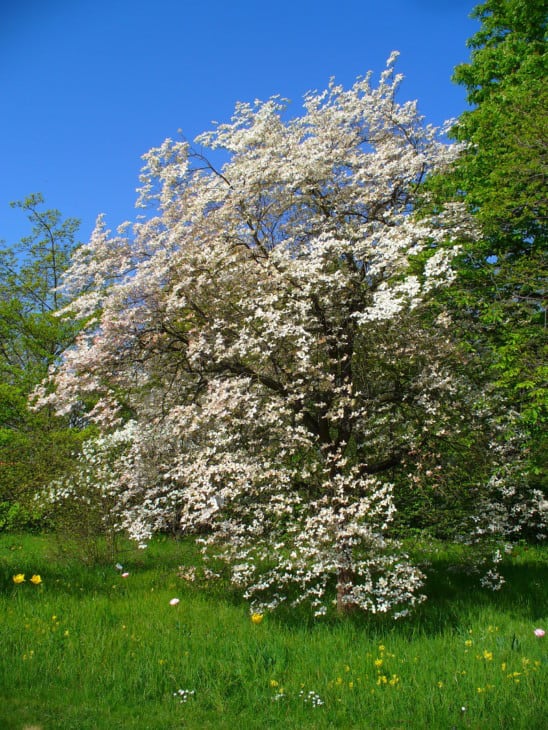
A beautiful ornamental tree, the Dogwood tree offers unmatched beauty throughout the year regardless of the season. Most homeowners and tree-lovers plant Dogwood for its light pink or showy white flowers that appear during the spring season. The leaves are green during the summer change but turn to a pretty shade of reddish-purple in the fall before dropping to the ground once the temperature further drops. Generally, Dogwood grows readily in Kentucky with little maintenance.
7. Magnolia
- Magnolia grandiflora
- Flowering in: Summer
- Max Height: 40 ft.

Magnolia trees are widely grown in Kentucky. With over 100 different types of Magnolia growing in Kentucky, it is easy to find the perfect tree that fits your space and style requirements. Depending on the type you choose, your tree may produce red, pink, yellow, or white flowers throughout the summer season. Some of the most popular magnolia trees for Kentucky gardens include the Cucumber tree, Umbrella Magnolia tree, Saucer Magnolia tree, and Bigleaf Magnolia tree.
8. Tulip Poplar
- Liriodendron tulipifera
- Flowering in: Late Spring and Early Summer
- Max Height: 70-90 ft.
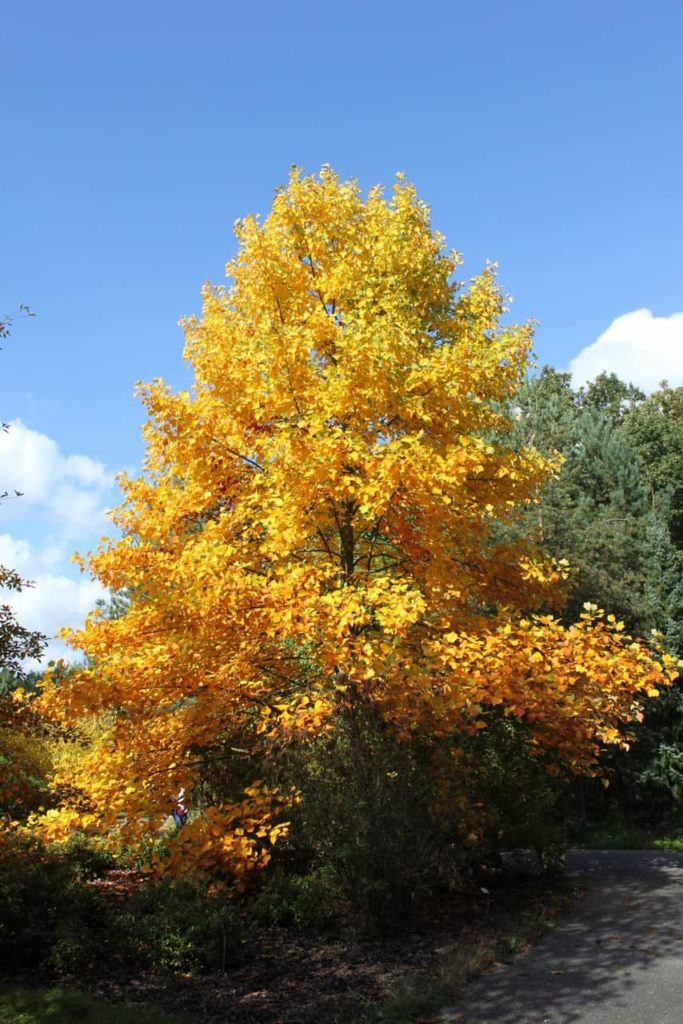
Also known as the Tulip tree, Tulip poplar is named after its tuple-shaped flowers. In reality, the tree is more closely related to Magnolia trees than poplar or tulip. It puts on a glorious show of flowers during the blooming season and attracts bees and birds. However, keep in mind that Tulip Poplar can grow really big in size, around 70-80 feet in height and 50 feet wide. So, make sure you provide your tree ample space to grow.
9. Northern Catalpa Tree
- Catalpa speciosa
- Flowering Time: Spring and Early Summer
- Max Height: 40-60 ft.
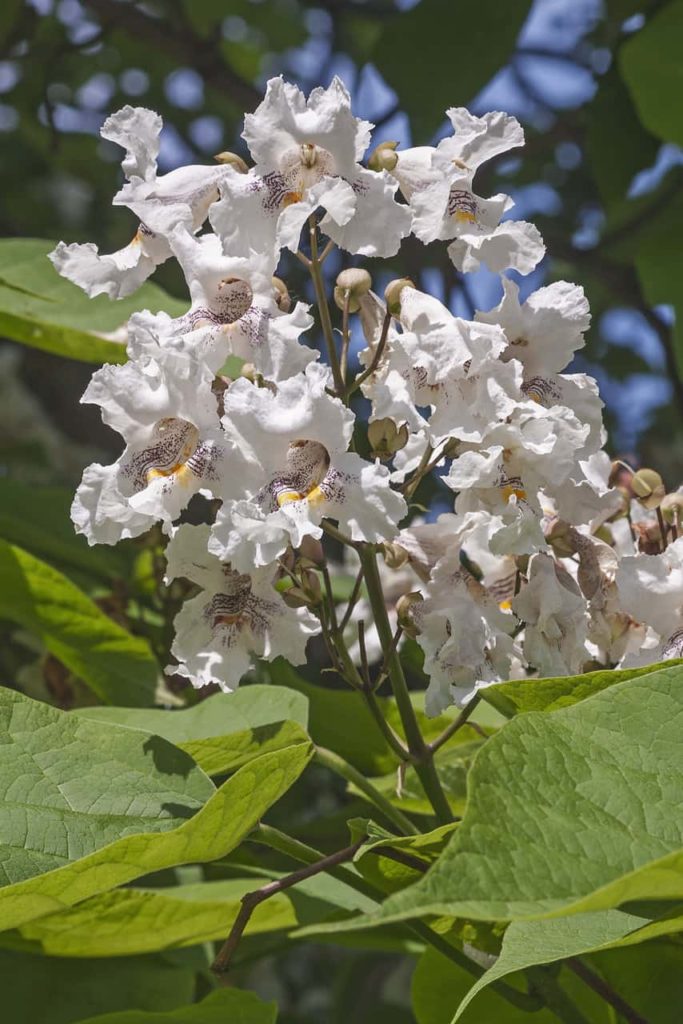
Big and beautiful, the Northern Catalpa tree is a fast grower. The foliage is dense and dark green in color. The large heart-shaped leaves offer cool shade throughout the year. However, the real magic happens during the blooming season as the white flowers open up, spreading a lingering fragrance in the air all around. Bean-like pods are another notable feature. Just like Tulip Poplar, these trees grow wide and tall. Therefore, it is important to choose the right spot for planting your Northern Catalpa trees.
10. Kentucky Yellowwood
- Cladrastis kentukea
- Flowering Time: Spring
- Max Height: 33-49 ft.
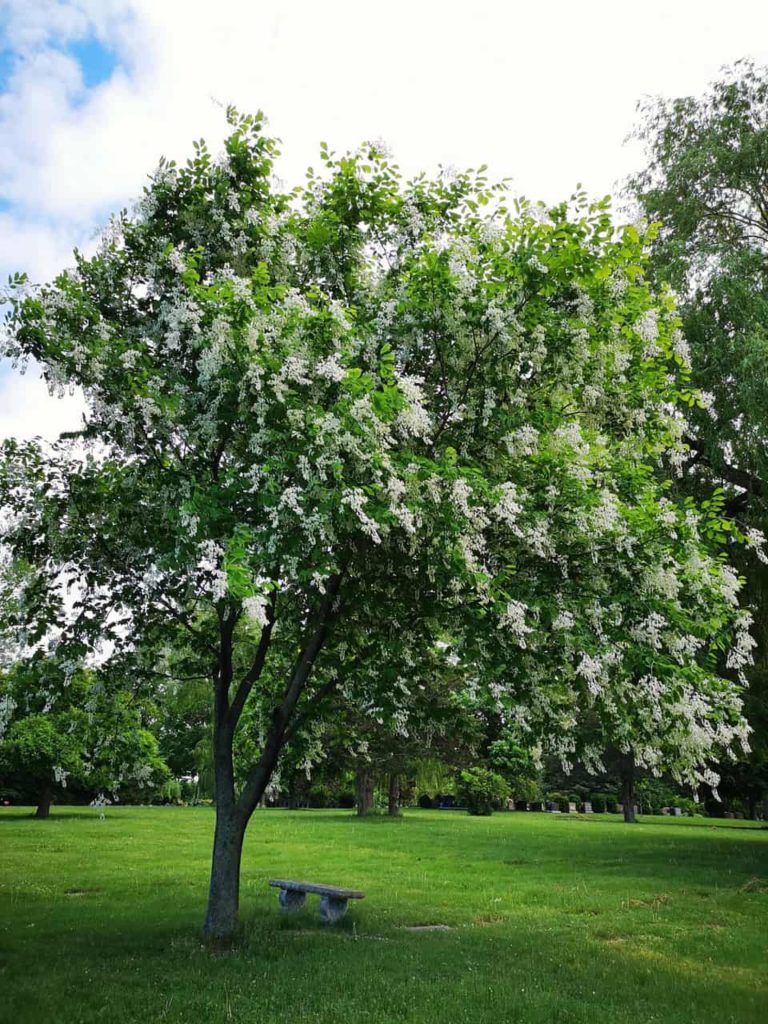
Kentucky Yellowwood is a medium-sized, flowering tree adorned with showing white, pea-like flowers that hang in clusters, adding to the overall aesthetic appeal when in bloom. The tree also boasts an attractive branch system that makes it stand out during the winter season. However, the complex branching with multiple trunks habit makes the tree prone to breakage if not pruned properly. For best results, grow your Kentucky Yellowwood in moist, fertile, and well-drained soil.
11. Autumn Cherry Tree
- Prunus subhirtella ‘autumnalis’
- Flowering Time: Spring
- Max Height: 20-30 ft.
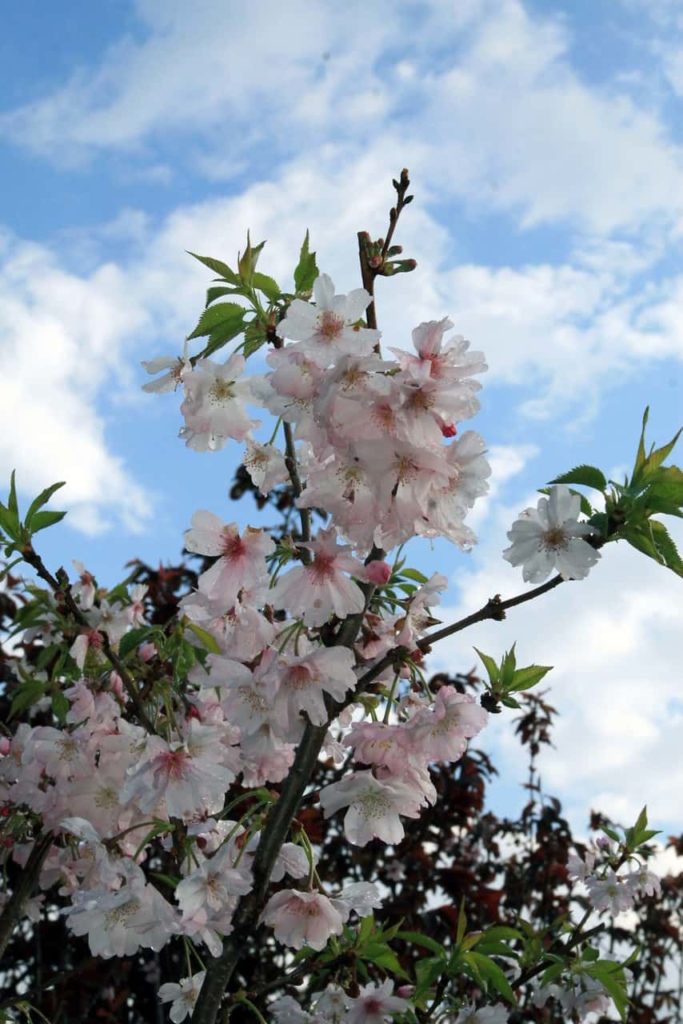
With broad and delicate upright branches, the Autumn Cherry tree is a sight to behold, especially when in bloom during the spring season. The oblong-ovate leaves change colors, transitioning from bright green in summer to gold and then red color during the autumn. The blossoms start as deep-pink buds and eventually turn into pale, almost white flowers. The tree also produces small berries that work to attract birds and other wildlife. It thrives well in Hardiness zones 5 to 8 in acidic, well-drained clay or loamy soil.
12. Japanese Snowbell Tree
- Styrax japonicus
- Flowering Time: Mid Spring
- Max Height: 20-30 ft.
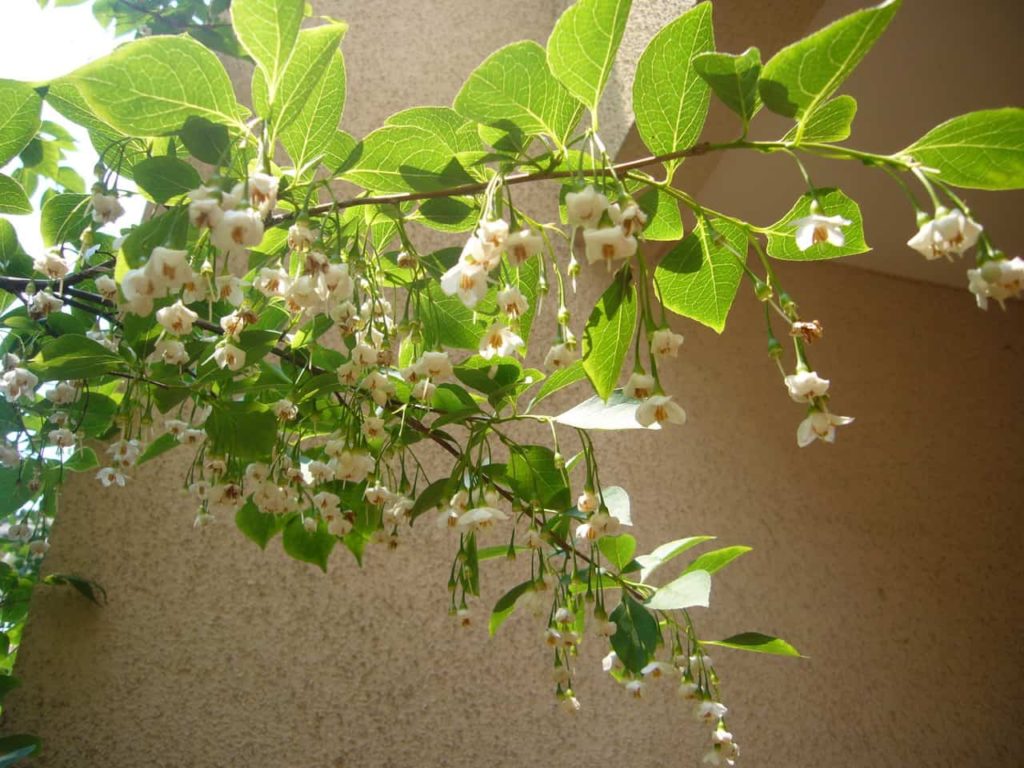
Japanese Snowbell Tree is slow-growing but totally worth the wait. It is compact and easy to care for with low maintenance needs. The tree produces lovely white flowers that appear in a cluster of petaled bells that hang upside down from late spring and early summer. Once the summer season sets in, the mildly fragrant flowers are replaced by olive-like fruits. The tree is not particularly showy in the autumn. However, the leaves turn yellow and sometimes red before dropping in winter.
13. Crabapple Trees
- Malus sylvestris
- Flowering Time: Spring
- Max Height: 40 ft.
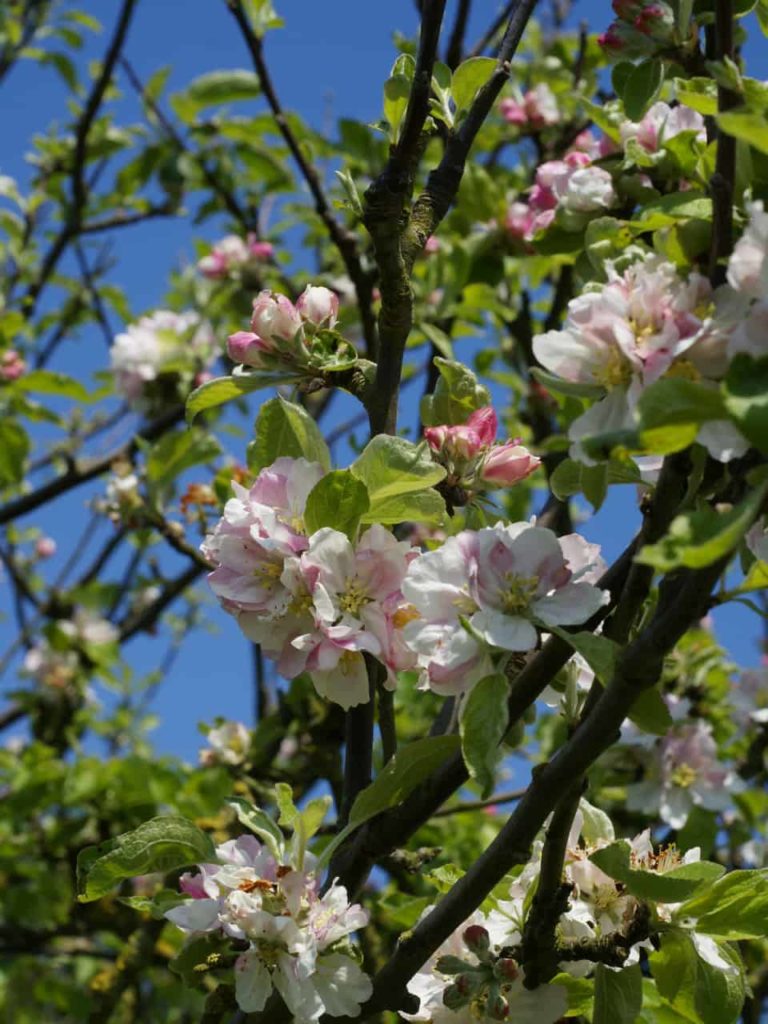
Crabapple trees do exceptionally well in the Kentucky climate. They are available in different types, which means you have plenty of choices when it comes to picking the right crabapple tree for your garden. Depending on the type of crabapple you choose, your tree may produce red, pink, or white flowers that attract bees and butterflies and leave a lingering fragrance in the environment. Some of the most popular types of crabapple trees include Golden Harvest, Red Jade, Silver Moon, Snowdrift, and Molten Lave crabapple tree.
14. Cockspur Hawthorn
- Crataegus crus-galli
- Flowering Time: Spring
- Max Height: 26 ft.
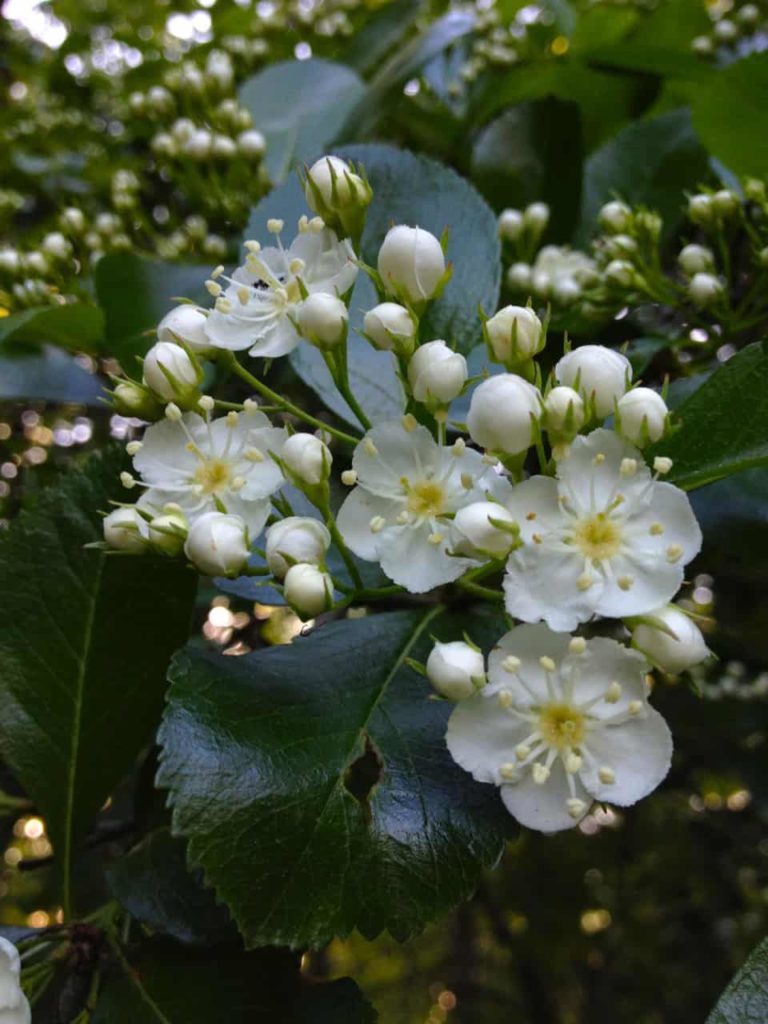
Belonging to the rose family, Cockspur Hawthorn is a native tree that blooms in spring and provides fruit during the fall and winter seasons. It produces white, fragrant flowers and red fruits, adding color to the landscape all year round. It thrives well in full sun and well-drained soil. While Cockspur Hawthorn is fairly easy to grow, it is well suited for experienced gardeners as it is prone to certain diseases and pests, including cedar rust disease, leaf spots, scale, mites, and fireblight. It also has long thorns.
15. Black Cherry
- Prunus serotina
- Flowering Time: Early Spring
- Max Height: 60-90 ft.
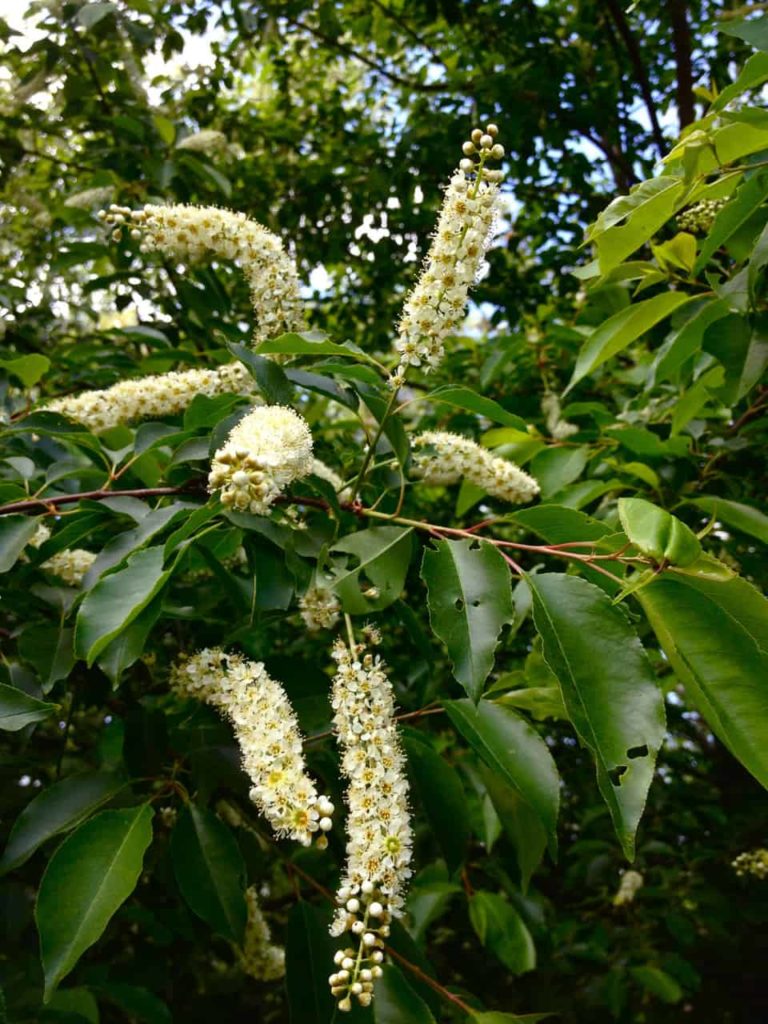
Found throughout Midwest and the eastern US, the Black Cherry tree also belongs to the rose family. It grows simple, dark green, alternate leaves with toothed margins. As the seasons change, the dark green color of the leaves turns yellow and then orange in the fall. Small, white flowers appear in early spring. While the flowers add to the natural beauty, they have a slightly unpleasant odor. Small cherries also appear in clusters. As the fruit ripens, it turns purple-black in color attracts wildlife.
16. ‘Ivory Silk’ Japanese Tree Lilac
- Syringa reticulata ‘ivory silk’
- Flowering Time: Spring
- Max Height: 20-25 ft.
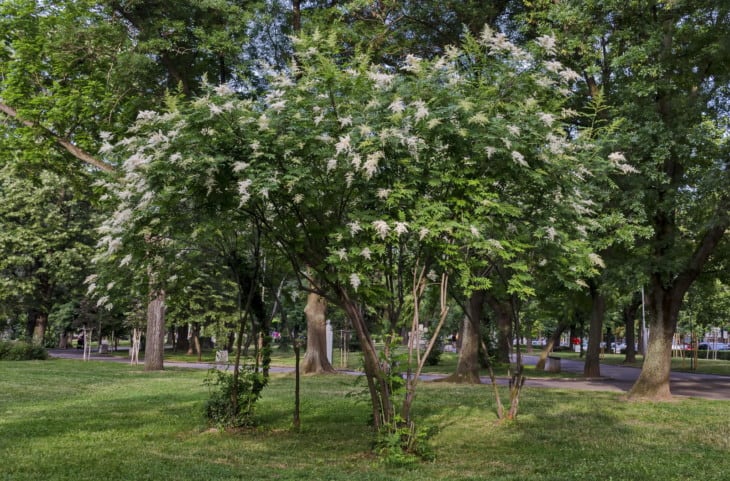
Boasting creamy white blooms, the ‘Ivory Silk’ tree is a large, round shrub. It produces large clusters of white flowers that spread a captivating fragrance in the air. The tree blooms in the spring and may continue to produce lovely blossoms throughout the summers. It is best to grow your ‘Ivory Silk’ Japanese Tree Lilac in cooler areas (hardiness zones 3 to 7). Find a sunny spot for your Ivory Silk as the tree enjoys the sun. Use well-drained, slightly alkaline soil for best growth.
17. Royal Empress Tree
- Paulownia tomentosa
- Flowering Time: Spring
- Max Height: 40 ft.
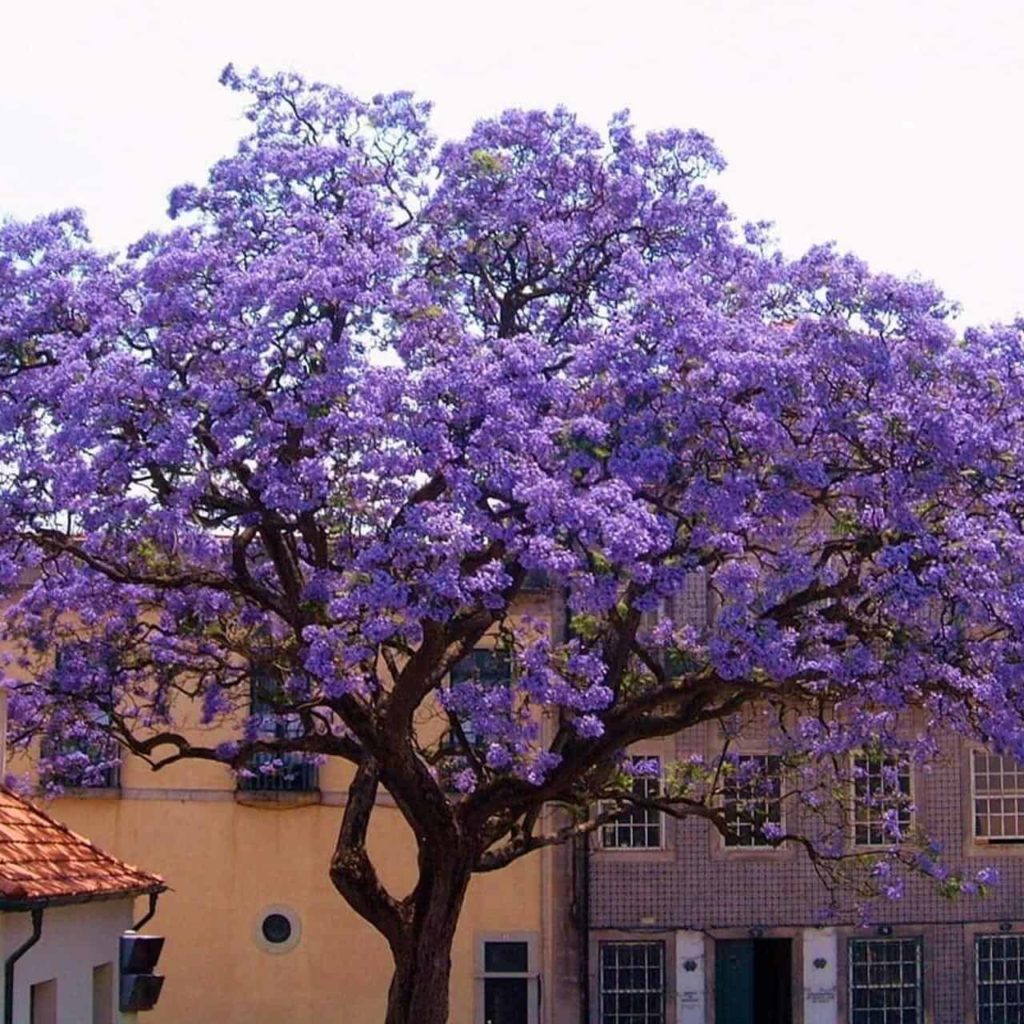
The Royal Empress tree is characterized by its high branches and lovely canopies. The root system is also non-aggressive, which means you won’t have to worry about invasive roots. The tree is drought tolerant and produces beautiful, sweet-scented lavender blooms in the spring. The leaves are large and offer shade during the summer. Keep in mind that Royal Empress is a sun-lover, so find a sunny spot of your tree and use medium moisture, well-drained soils.
18. Paulownia Tree
- Paulownia tomentosa
- Flowering Time: Spring
- Max Height: 30-40 ft.
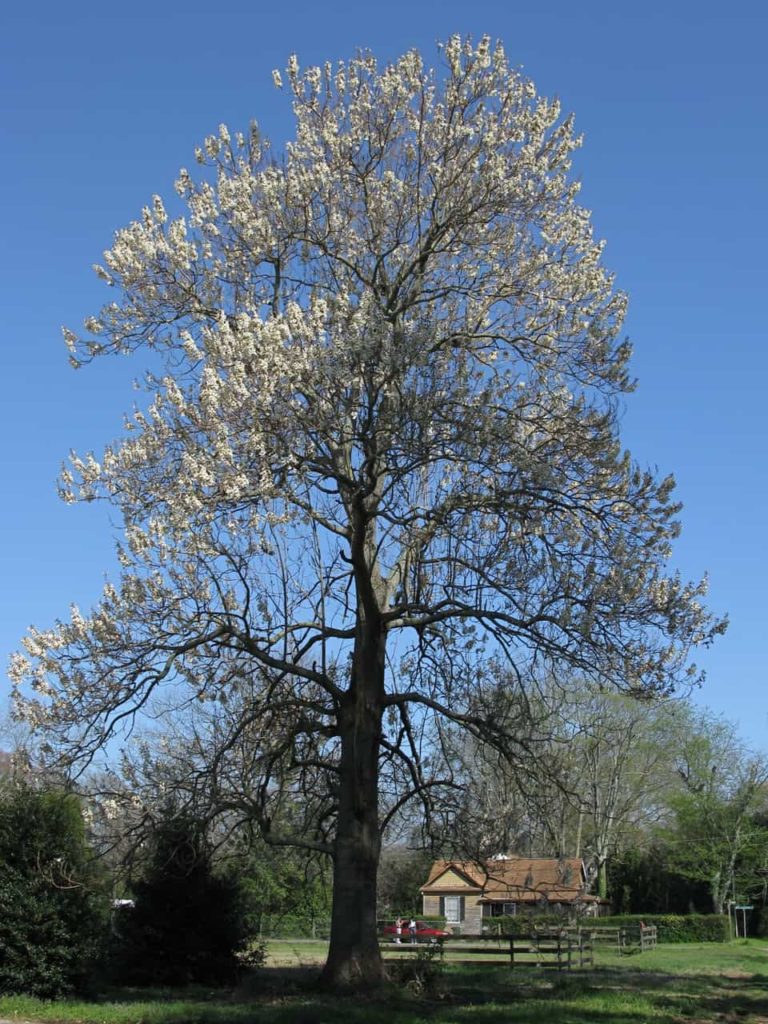
Paulownia is a fast-growing tree, with some species reaching up to 20 feet in one year. It is readily grown for timber and is sometimes considered to be invasive in the US. However, it is a popular exotic ornamental tree in Europe, and you can grow it in your garden as well to boost the aesthetic appeal. It blooms during the spring season. The exact color and size of the buds and flowers depend on the type of Paulownia tree you choose.
19. Ornamental Pears
- Pyrus calleryana
- Flowering Time: Spring
- Max Height: 50 ft.

Not a fan of fruit trees or find them too messy? No problem – consider the ornamental fruit tree to take your garden to the next level. These trees provide snowy white flowers during spring and summer. In the cooler weather, the striking colors of leaves add to the natural beauty and attraction of the tree. Ornamental pears are available in different varieties. Regardless of the variety you choose, choose a sunny spot for your lovely tree.